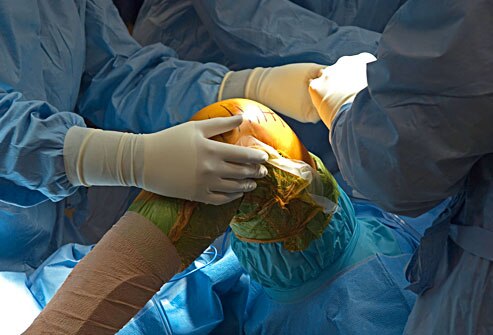
Surgery is usually the last line of treatment, when all other treatments – including physical therapy and medications – have not helped the patient. Joint replacement surgery is a highly effective way of eliminating joint pain, correcting a deformity, and helping improve the patient’s mobility (movement). Joint replacement surgery is also performed to treat advanced arthritis.
People who are considered for joint replacement surgery often have severe joint pain, stiffness, limping, muscle weakness, limited motion, and swelling. Depending on the joint that is affected and the amount of damage, patients may have trouble with ordinary activities such as walking, putting on socks and shoes, getting into and out of cars, and climbing stairs.
The most common causes of the joints not working properly are osteoarthritis and rheumatoid arthritis. While nobody is certain what causes arthritis, several things may contribute to joint weakening and lead to arthritis, including:
While being overweight does not necessarily cause arthritis, it can contribute to early joint problems that can get worse quickly.
Joint replacement surgery is designed to replace the damaged cartilage and any bone loss. During the procedure, the damaged joint is resurfaced, and the patient's muscles and ligaments are used for support and function.
The prosthesis (replacement joint) is made of titanium, cobalt chrome, stainless steel, ceramic material, and polyethylene (plastic). It can be attached to the bone with acrylic cement or it can be press-fit, which allows bone to grow into the implant. Once the joint replacement is in place, the patient has physical therapy to be able to move and use the joint.
The 3 most common joint replacement surgeries are hip, knee, and shoulder.
Hip replacement
Total hip replacement is a surgery for replacing the hip socket and the "ball" or head of the thigh bone (femur). The surgeon resurfaces the socket and ball where cartilage and bone have been lost, and then inserts an artificial ball and socket into healthy bone.
Most people who have total hip replacements have serious changes in the hip joint caused by arthritis. A hip replacement is recommended if the person cannot bear the joint pain, and when the person can’t perform activities of daily living because the damaged hip is preventing it.
Knee replacement
Knee replacement surgery is performed to treat advanced or end-stage arthritis. When arthritis in the knee joint or joints has advanced to the point where it cannot be treated with medicine alone, or the deformity has become severe and keeps the patient from using the knee, replacement surgery may be recommended.
The need for knee replacement surgery is the damage to the coating or gliding surface called the articular cartilage. Depending on the amount of damage, ordinary activities such as walking and climbing stairs may become difficult. Damage to the knee joint cartilage and bone may also cause deformity. Knock-knee or bow-legged deformities and unusual knee sounds (crepitus) may become more noticeable as the deterioration gets worse.
Knee replacement surgery is designed to replace this damaged cartilage or gliding surface, as well as any loss of bone structure or ligament support. The material used for knee replacement is similar to that used for hip replacements.
Shoulder replacement
Total shoulder joint replacement is usually needed for people who have advanced forms of osteoarthritis or rheumatoid arthritis, and sometimes for those who have had severe injury from a shoulder fracture. The main goal of total shoulder replacement surgery is to relieve pain; other goals include improving motion, strength, and function.
Similar to the hip joint, the shoulder is a large ball-and-socket joint. The main reason for a total shoulder replacement is pain that is not being relieved with therapy or other treatment methods.